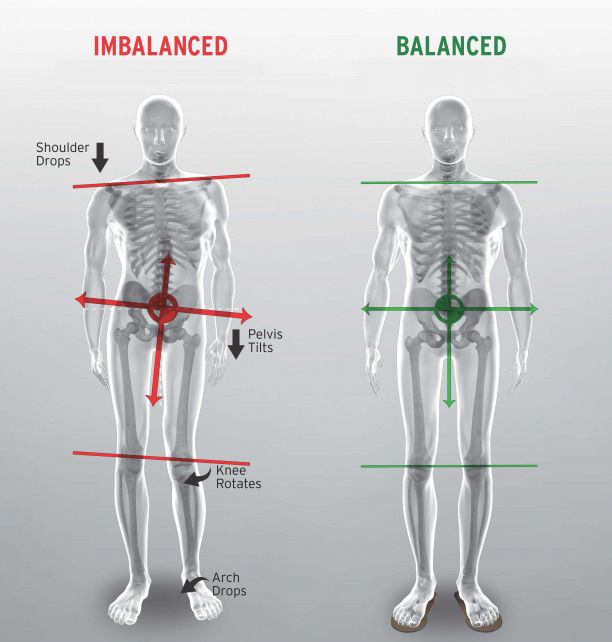Humans are bipedal upright structures in the field of gravity. While gravity pulls us down, life force (qi) rises up, creating a dynamic relationship from feet to head. The ancients understood this whole-body relationship in terms of the complexly layered channel system. This ancient channel system is mirrored in the contemporary concept of bio-tensegrity and the myofascial system’s quality of dynamic reciprocity.
Structural distortion in muscles, joints and fascia inhibit free flow of qi, blood and fluids. Hashimoto Keizo’s Sotai “Patterns of Distortion” informs the clinical approach. These compensatory adaptations zig-zag across the body. The patterns of myofascial distortion represent chains of kinetic compensation that can travel through the entire body.
The Koshi Balancing™ Kata assesses and balances 7 critical transitional structural zones. These are often zones where compensation patterns transfer tensegrity stress to another part of the body. Sotai movements combined with acupuncture, teishin or acupressure can rebalance structure, and therefore function, thus enhancing Free Flow in body and mind.

Koshi Balancing™ Kata Assessment
1. SEEING: Observe the center and lateral lines while standing. Where is there lack of support in the field of gravity? Examine key structural channels: Kidney-Chong Mai, Yin and Yang Qiao Mai, Foot Yang Sinew, Gall Bladder, and Dai Mai.
2. PULSE & ABDOMEN: Meridian Therapy Root Treatment protocols
3. CHANNEL & ACUPOINT PALPATION: Ashi-koshi tsubo
4. MUSCLE TESTS: Hamstring/quadriceps, iliopsoas, gluteal rotators, cervical ROM
5. SOTAI MOVEMENTS: Key transitional movements starting from toes, through pelvis, up to head. At each alignment axis, determine “Where is there ease of movement, where is there restriction?”
Treatment
An integrated approach using manual techniques, movement, and acu-moxa.
1. 5-PHASE ROOT TREATMENT to balance pulses (Meridian Therapy)
2. ABDOMEN Fukushin and Visceral Manipulation (VM) assessment
3. STRUCTURAL ALIGNMENT
a. Seitai Ho key structural assessments
b. Palpate channel deficiency and excesses
c. Key Sotai muscle tests: hamstrings, iliopsoas, adductors, posterior tibialis
d. Koshi Balancing Sotai: whole body balancing kata
e. Breath regulation with movement
4. PULSES Recheck and add structural root treatment points
5. BRANCH TREATMENT
